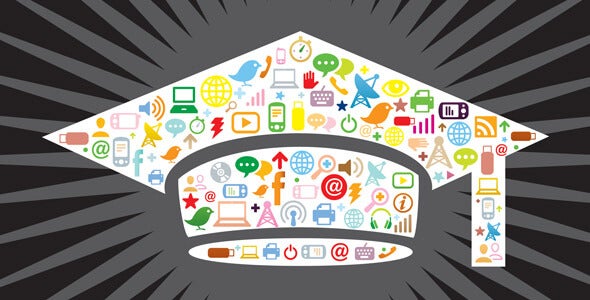Posted on 10/22/2015 in Business and Strategy
By wakefly
So we’re coming to the end of 2015 and you are starting to think about enrollment numbers for 2016. According to research done by the Education Market Group, of the more than $600 million dollars spent by higher education marketers on paid advertising last year, 24 percent ($152.3 million) went to online display advertising.
Are you prepared to set aside an adequate budget to compete with other schools vying for the same student? Are you reaching them across the web and targeting them in the right ways? Not only are we seeing digital marketing budgets rise for higher education, but we’re also seeing a shift in dollars from desktop to mobile and social media.
So what do you need to do to increase your enrollment numbers next year and stay ahead of the competition? Make sure you adjust your display advertising strategy in the following ways:
Increase Mobile Ad Spend
eMarketer has predicted that by the end of this year, mobile digital ad spending will account for more than half and that it will surpass desktop for the first time.

This is a much higher growth rate than expected at the beginning of this year as eMarketer has revised all of its 2015 figures to be higher. A client of mine in the education industry has been working with Quantcast for the better part of a year now.
What we’ve found is that conversions are being driven on mobile devices almost 95% of the time so we’ve shifted almost all of our budget to mobile inventory. Through this shift in the strategy, we have seen conversions increase ~20% year over year.
Utilize Social Media Platforms to Reach Students Anywhere & Everywhere

Social media is also becoming very important in the education space and to prospective students. The world is a socially connected place, especially current college students; they are living their lives more connected than ever.
According to Hanover Research “institutions are making greater use of social media and digital platforms like Twitter, Facebook, YouTube, and podcasts to market their programs, while website design and the interface is proving a crucial component in how colleges and universities present themselves to prospective students.” They also go on to point out:
- Facebook is the most common form of social networking being used, with 98% of colleges and universities reporting having a Facebook page
- 84% report having some form of an institutional Twitter account
- 86% report having an institutional YouTube channel/presence
- 66% report maintaining some kind of blog
- 41% report the use of podcasting
- 47% of admissions professionals report using LinkedIn
Between mobile and social media you can interact with students when they are on the go and get them interested in your programs by posting engaging content across social media. This provides you with an opportunity to create a more focused message that will move prospective students along their decision path.
Related Articles

How Do I Optimize My Website for AI?
Why do you need to optimize your website for AI?AI-powered search engines like Google’s AI Overview, Perplexity, and tools such as Microsoft's [...]

Outdated or Outstanding? How to Tell If Your Website Needs a Refresh
Your website is the digital face of your business. It serves as a first impression, a marketing tool, and a resource for potential customers. [...]

Preparing a Website Redesign Budget for 2025: A Step-by-Step Guide
As we approach 2025, businesses are recognizing the necessity of a fresh, user-friendly website to stay competitive in a rapidly evolving digital [...]

